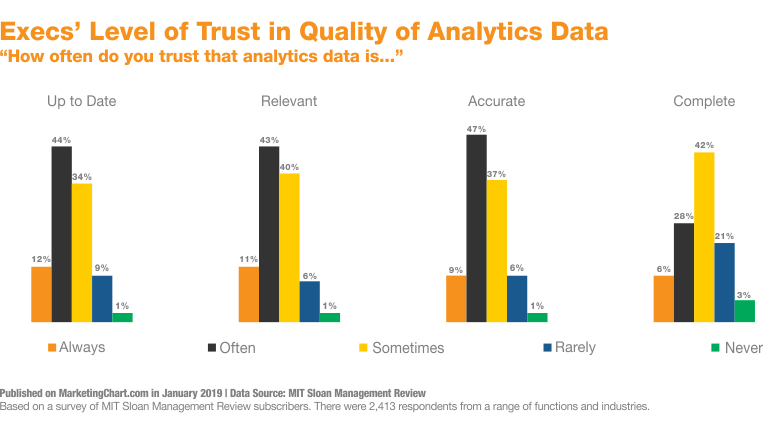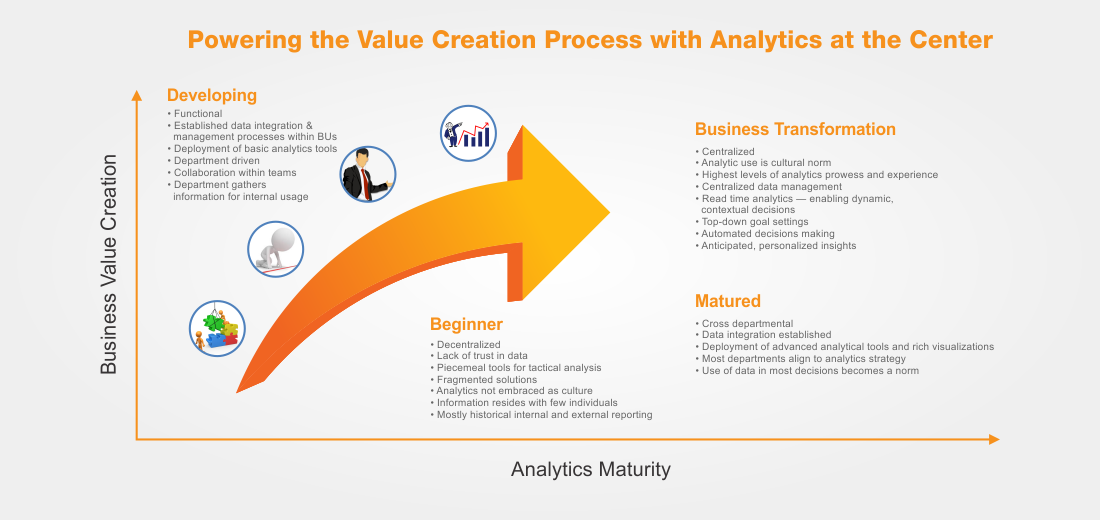"The future belongs to those who see possibilities before they become obvious." - John Scully
The Digital Age
The world as we know it is embedded in the digital age, shifting from traditional models to an economy primarily based upon information technology and data intelligence. In the past, business decisions were essentially formulated from hunches and gut feelings, some informed and some lacking key domain expertise, leading to decisions that were not fully developed. When looking back at the large companies of the 80s, 90s, and 2000s that are no longer here today, one can’t help but wonder if knowledge-based decisions derived from analytical insights and business intelligence could have changed the direction of the organization.
Data and analytics tell a story. They explain past successes and failures while providing the opportunity to learn and recognize evolutionary progress. This story enables the capability to foresee changes in the market, customer behavior, ROI, and ultimately make the best decisions that will lead an organization into the future.
A Data-Driven Approach to Business Management
The “Big Data” analytics market was valued at US$ 37.34B in 2018 and is expected to reach US $ 105.08B by 2027. Yet today, many organizations still have not capitalized on the impact and guidance that data analytics provide, neglecting to fully develop and compound their historical data, measurements, and statistics into a foundational aspect of their business model. While some organizations have developed data, they have not put the proper tools in place to fully analyze and understand each variable. They launch ineffective and disconnected analytics programs that ultimately prevent the organization from obtaining the necessary insights that can lead to educated decisions.
Although there is an established need for data analytics in the workplace, many senior executives do not take analytics into consideration during the decision-making process. This is due to many factors, but the most common scenario is that they do not trust the accuracy of their own data, further complicating matters.

A 2019 study of leading large corporations provided deeper insights into the adoption of data analytics:
- 72% of survey participants report they have yet to forge a data culture
- 69% report they have not created a data-driven organization
- 53% state they are not yet treating data as a business asset
- 52% admit they are not competing on data and analytics
To go a step further, despite the increasing global investment in data and AI initiatives, the percentage of firms identifying themselves as being data-driven has declined in each of the past three years:
- 37.1% in 2017
- 32.4% in 2018
- 31.0% in 2019
Making decisions and then trying to find the data to support those decisions are common human failures. In reality, the data provides the necessary information that ultimately helps finalize the determination. A look into the mortgage crisis of 2009, or the Wells Fargo bank fraud issues of 2016, are prime examples of how incorrect data can lead to bad business decisions. These were both an ethical lapse, but they were also driven by unrealistic goals derived from improper data.
Identifying Opportunities in a Sea of Information
Identifying, understanding, and deploying analytics across an organization is a tasking process, but one that will deliver undeniable results. In an ever-changing global environment that is impacted by a long list of factors, one must consider the risk of not integrating data and analytics into everyday decisions. Historical data from multiple organizations will show that the status quo does not transition well to long-term and sustainable growth.
The first step is identifying the problem, followed by a defined process that verifies information at each interval to ensure a solid transition to the end goal.

Vee Healthtek is driven by innovation, and our work is founded on a thorough review of our clients’ needs. In the age of analytics, our clients expect first-class results and we work to transform their organizations by combining industry expertise with a deep understanding of business management, analytical insights, and process improvement.
As the competitive landscape continues to change, developing and understanding the impact that data provides will ensure that your organization is prepared for change, embracing it while adapting to survive and thrive in the uncertain times ahead.
Source:
- https://hbr.org/2019/02/companies-are-failing-in-their-efforts-to-become-data-driven
- https://hbr.org/2020/05/is-your-business-masquerading-as-data-driven
- https://www.researchandmarkets.com/reports/4992328/global-big-data-analytics-market-size-market
- https://sameerdhanrajani.wordpress.com/ 2014/11/25/building-a-robust-data-strategy-roadmap-part-ii/
